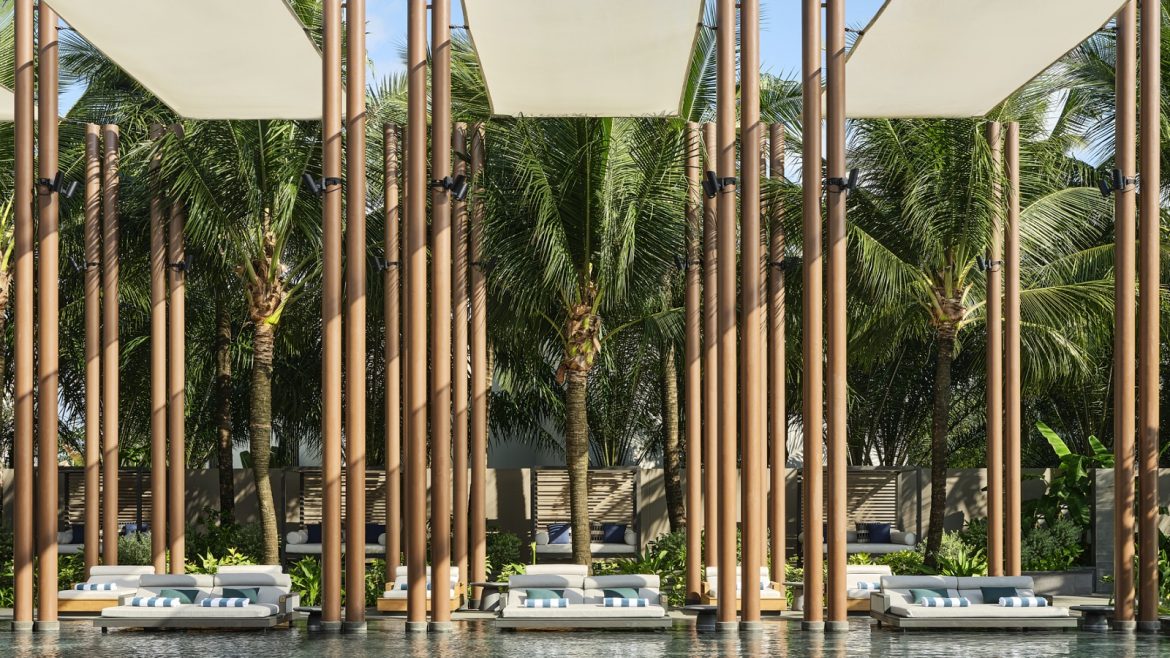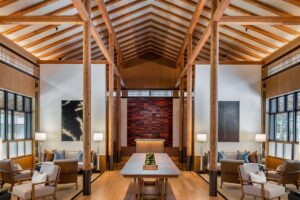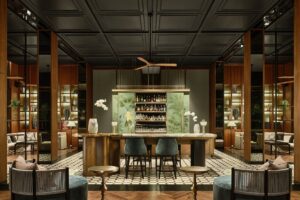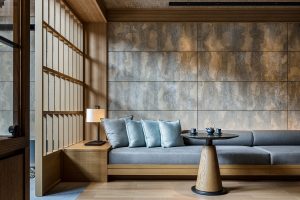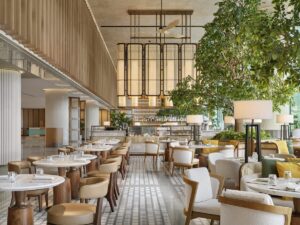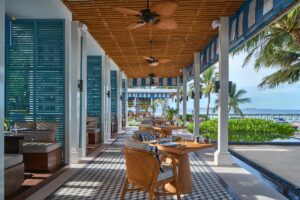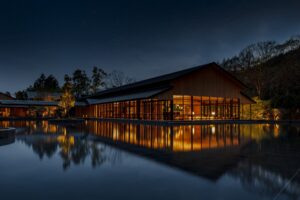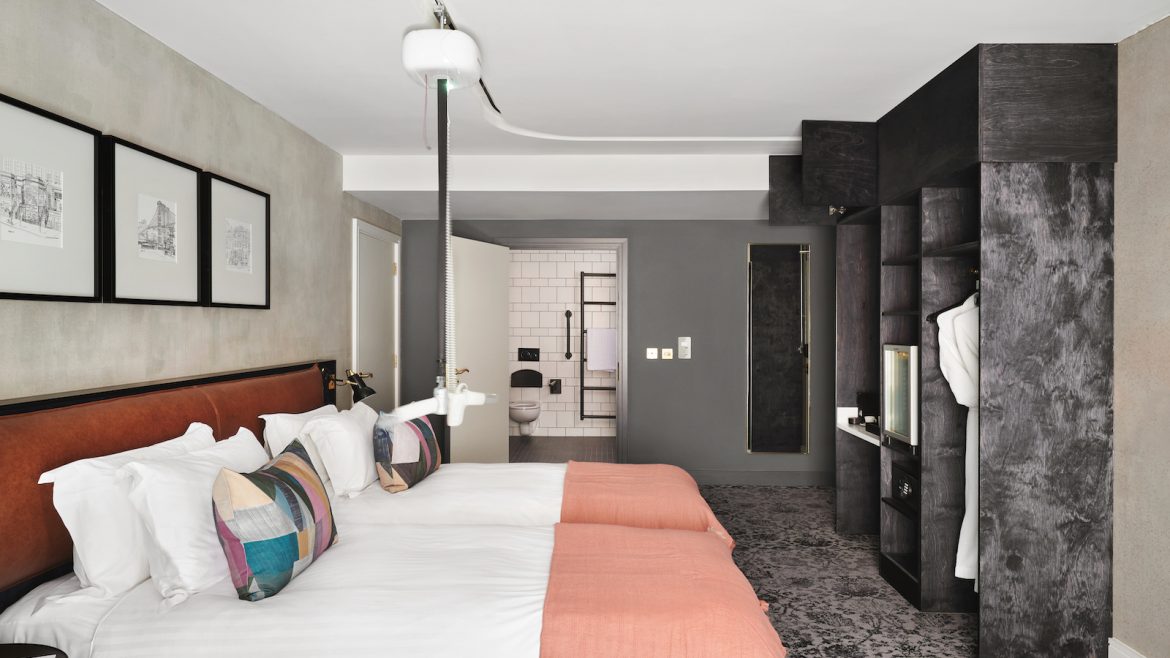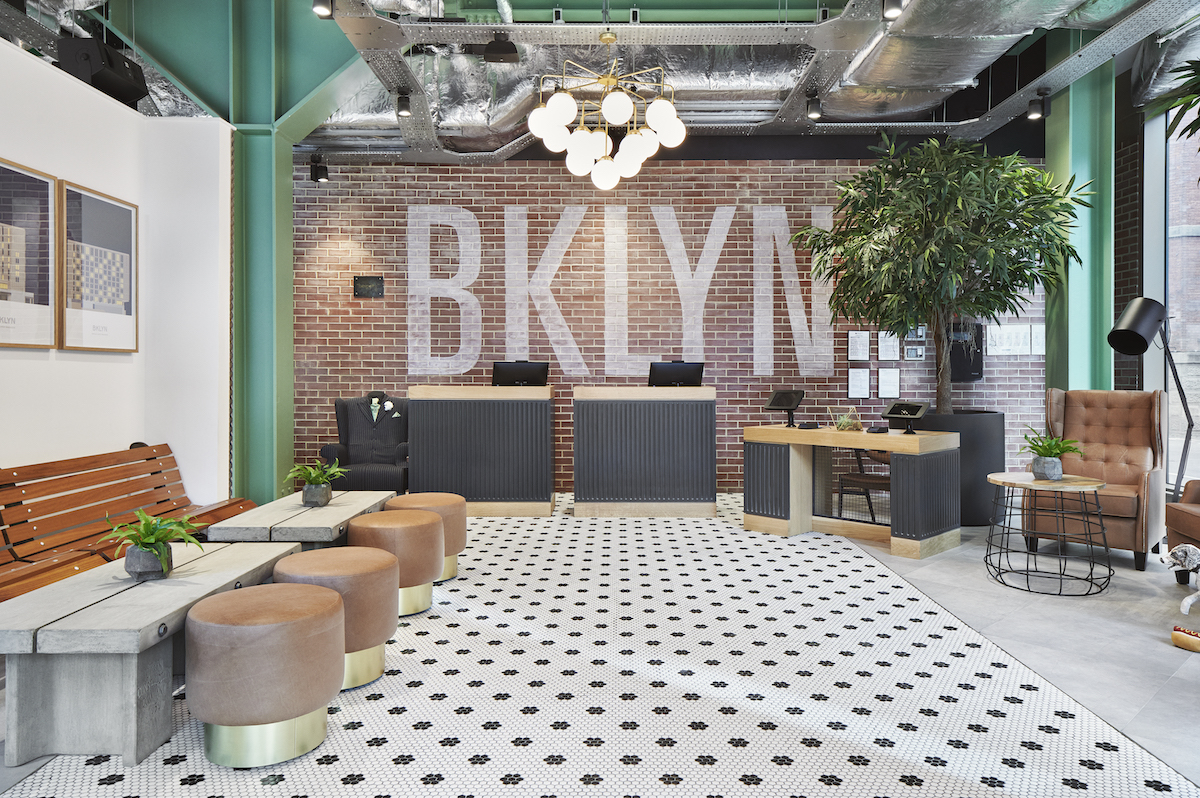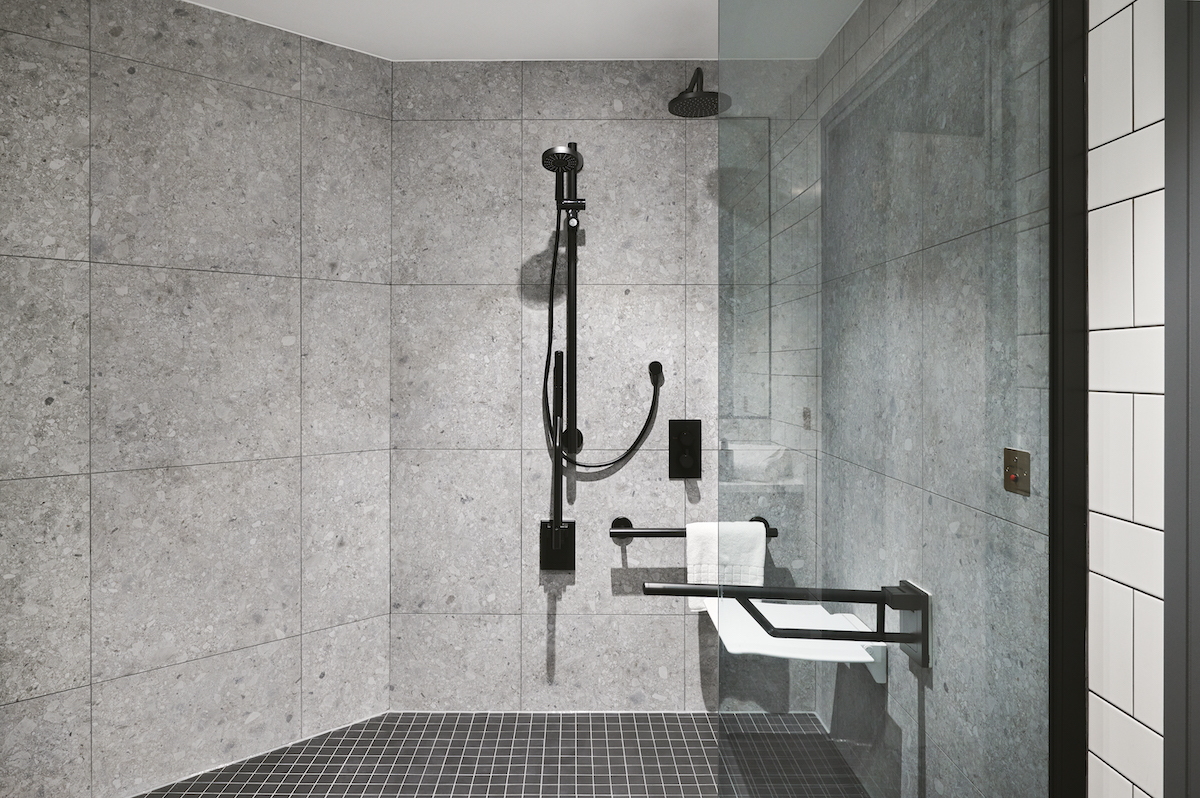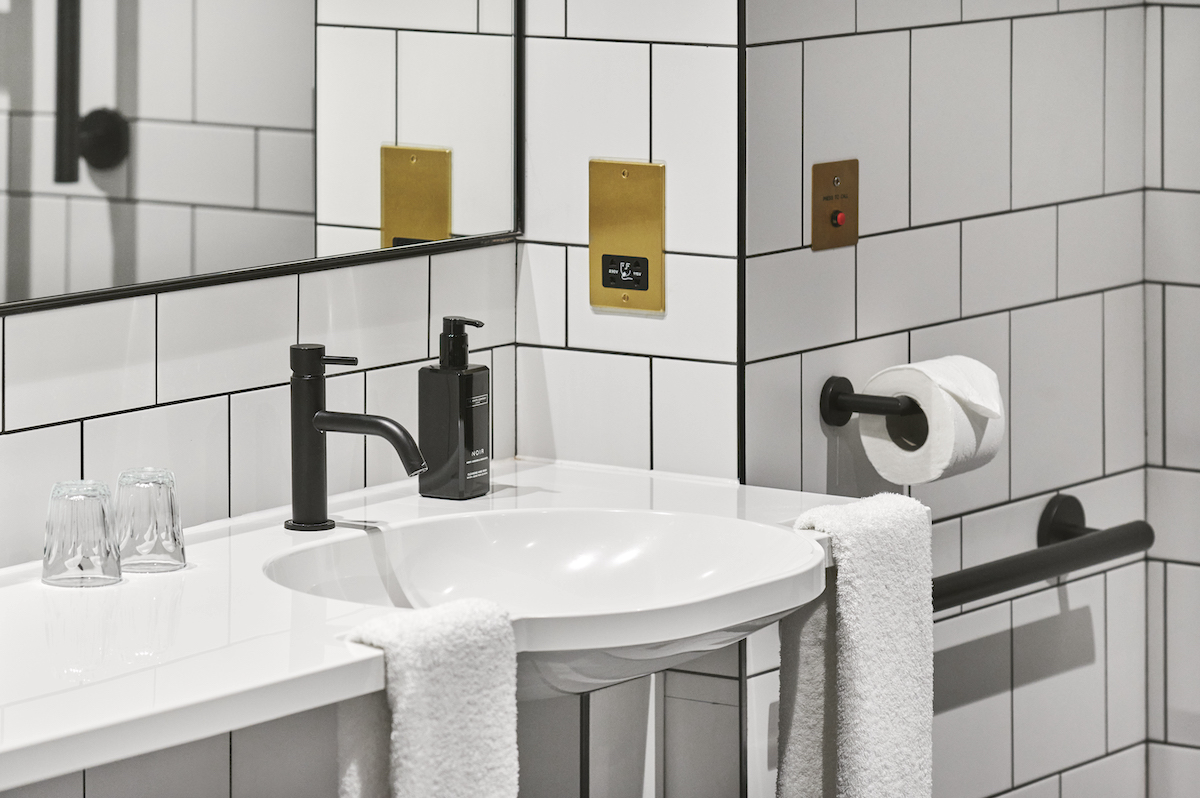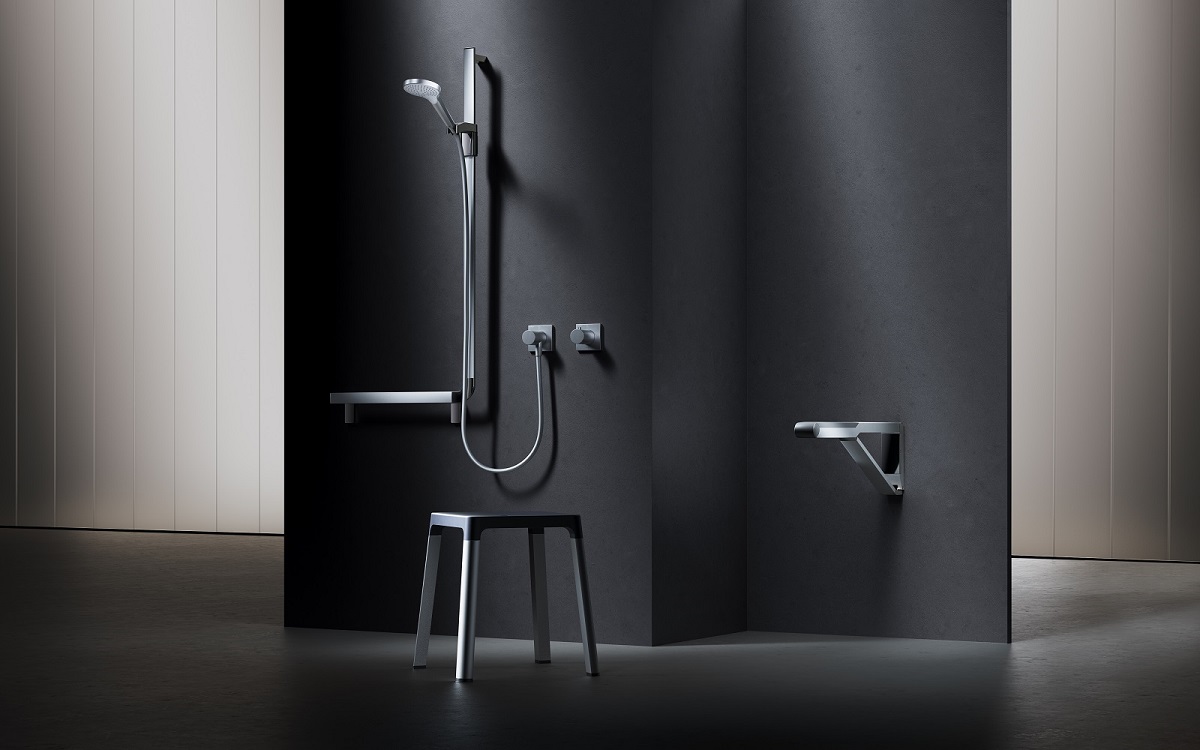Reusable materials in hotel lighting
https://hoteldesigns.net/wp-content/uploads/2023/11/Kimpton-Fitzroy-reception-lounge-media-1024x640.jpg 1024 640 Hamish Kilburn Hamish Kilburn https://secure.gravatar.com/avatar/81d2884aeeac3c45e38c47cacc508c2178bab773320ff2d6a83bdcc803d93aec?s=96&d=mm&r=gAs part of Hotel Designs’ deep dive into all things sustainability we talked to Michael Mulhall from Dernier & Hamlyn who shared his experience of how its clients are working with them to develop innovative hotel lighting by reusing bespoke light fittings…
It wasn’t long ago that the vast majority of interior designers operating in the luxury hospitality or residential space would have shunned the idea of reusing high-end bespoke chandeliers and pendants. But this is no longer the case and is driven by a range of imperatives and requirements.
Undoubtedly, the importance of embracing sustainability and environmental stewardship in the business world is gaining increasing traction. Nowhere is this trend more apparent than in the fields of design and hospitality. As a result, designers are becoming more conscious of the sources of the products they acquire for their projects and are prioritising transparency and accountability when communicating with their clients. Furthermore, they are proactively seeking ways to diminish the carbon footprint generated by their projects from inception to completion. These positive actions collectively signify a significant stride in the right direction.
However as Mark Tremlett of Naturalmat said in a recent article on Hotel Designs, the industry must be wary of greenwashing and instead must look at ways that can contribute to achieving the circular economy we aspire to, where wastage is kept to an absolute minimum.
With bespoke lighting this can be a relatively easy endeavour. Whether it’s custom designed chandeliers, pendants, wall lights or table lamps they are invariably made from long lasting materials and manufactured in styles designed to stand the test of time. Usually, it is more than just about practical illumination and is at least decorative and quite often a piece of art. And very often it makes reference to a site’s history, geography, or environs. So, when it comes to updating its design story the lighting will frequently remain relevant.
However, this doesn’t imply that designers won’t seek to imprint their own influence upon the unique lighting that already exists. They might introduce novel elements, install it in unconventional manners, simplify its design, or enhance it based on the overarching narrative.
Reusing or repurposing bespoke lighting can also contribute significantly to carbon neutrality by removing the need to source new materials and cutting the miles that products need to travel to get them to site because they are already there.
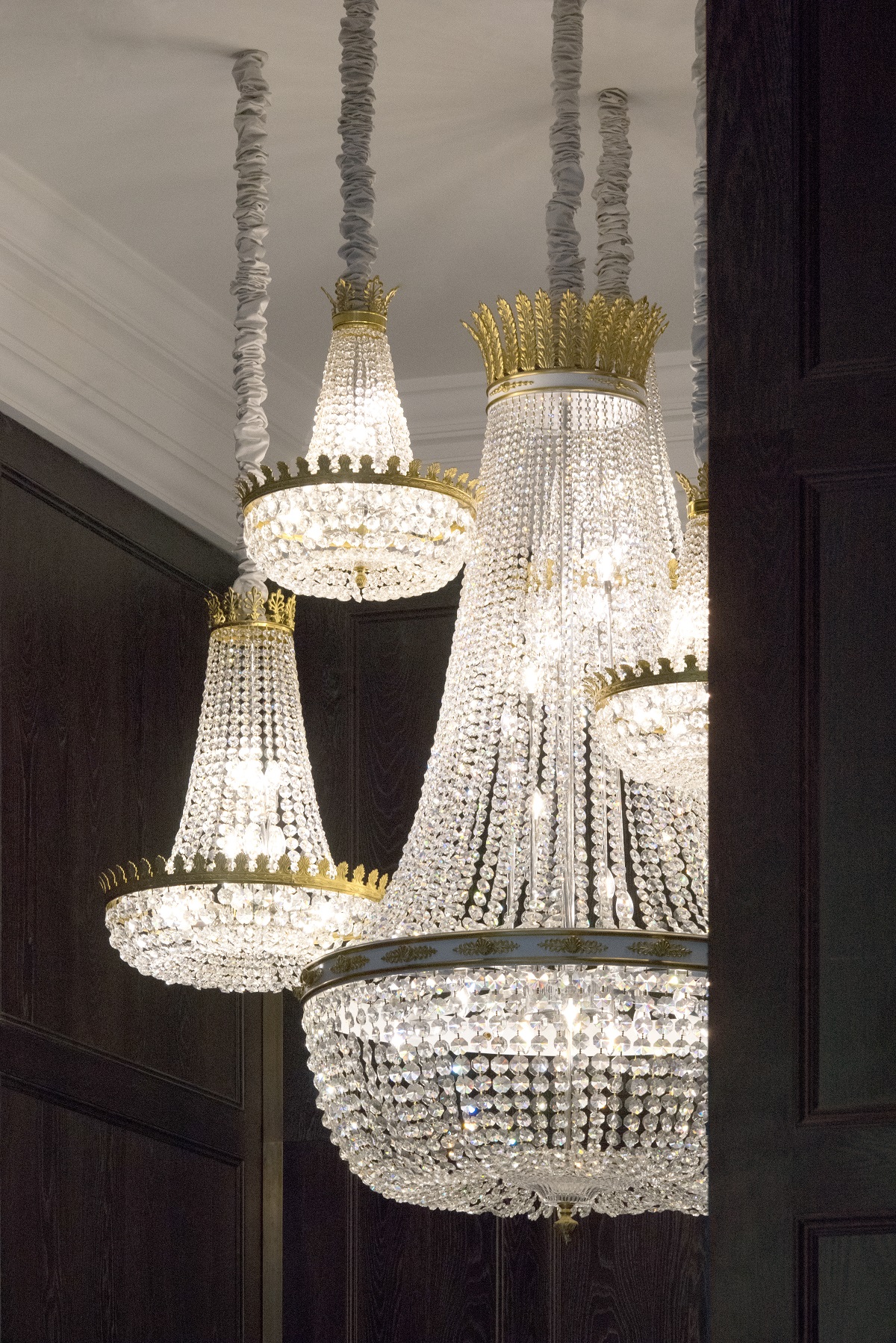
Image credit: IHG
A great example of this approach is our work for Tara Bernerd & Partners at the Kimpton Fitzroy hotel in Bloomsbury. We were asked to update light fittings and give them a contemporary feel. We revisited chandeliers that our team had made almost forty years before and gave them a new identity. 12 large drape and bag crystal chandeliers that we had installed throughout the hotel’s public areas in the 1980s were updated both aesthetically and technically. To undertake this specialist work, the chandeliers were removed from the hotel and taken to our factory where the crystal was meticulously cleaned, the chandeliers’ metalwork restored and the wiring updated to meet regulatory requirements. The chandeliers were then rehung in clusters to give a more current and playful twist.
In the case of the Standard Hotel London, Shawn Hausman Design (SHD) wanted to express individuality and sourced vintage fittings from around the world across a range of design eras using a variety of materials to accentuate the distinctiveness of the hotel’s public areas and bedrooms. Our team rewired and restored hundreds of floor and table lamps and pendant fittings, mostly from the 1970s, to ensure they met legal regulations and requirements.
Although we have consistently provided a restoration service, the perception of designers towards it is beginning to shift. Historically, it was typically conservation architects or designers engaged in heritage projects who approached us for lighting restoration endeavours. However, there is a noticeable shift, as more individuals now recognise the value of engaging with us to repurpose a wide array of fixtures. This shift reflects a growing awareness that incorporating such discussions can significantly contribute to the advancement of a circular and ecologically sound economy.
Dernier & Hamlyn is one of our Recommended Suppliers and regularly features in our Supplier News section of the website. If you are interested in becoming one of our Recommended Suppliers, please email Katy Phillips.
Main image credit: IHG



